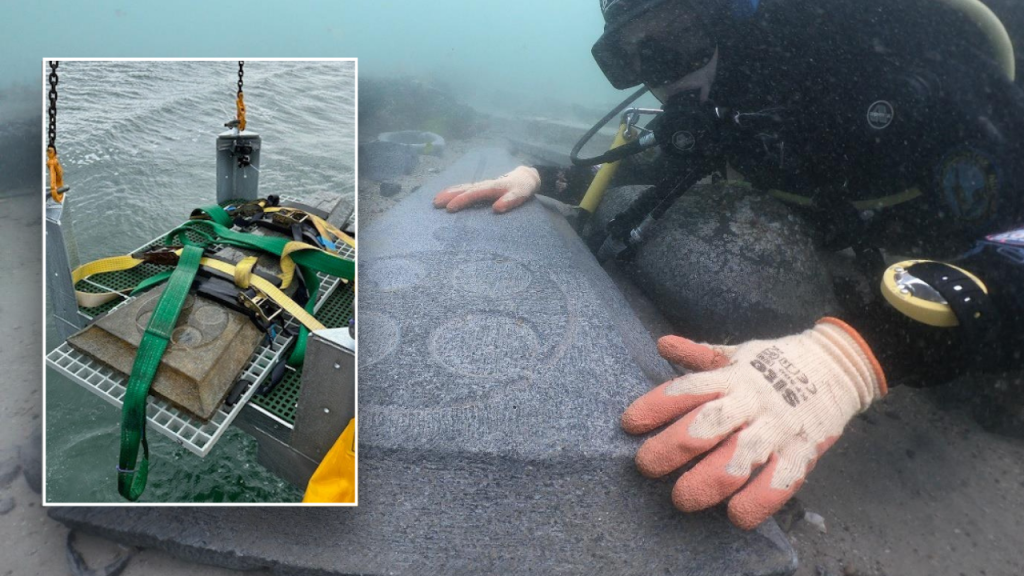British archaeologists from Bournemouth University recently made a fascinating discovery of medieval gravestones around an ancient shipwreck in Studland Bay, off the coast of Dorset. The slabs, carved from Purbeck marble, are believed to have been at the bottom of the English Channel for 800 years and were part of the cargo of England’s oldest historic shipwreck, which sank during the reign of Henry III in the thirteenth century. The well-preserved grave slabs, featuring carvings of Christian crosses, were likely intended for high-status individuals in the clergy.
Maritime archaeologists worked for over two hours to bring the stones back to the surface, with one slab measuring one and a half meters and weighing around 70 kilograms, and the other, larger slab in two pieces, with a combined weight of around 200 kilograms. The grave slabs, made of Purbeck marble, were popular monuments for bishops and archbishops across cathedrals and monasteries in England during the thirteenth century. The discovery sheds light on the ancient craft of stonemasonry and the significance of these graves for medieval English society.
Tom Cousins, the archaeologist leading the study, explained that the Purbeck marble used for the slabs is also found in prestigious locations such as Westminster Abbey, Canterbury Cathedral, and Salisbury Cathedral. The wreck where the gravestones were found went down during the height of the Purbeck stone industry, and the team believes that the stones were likely being carved on-site in Dorset. Further research is being done to learn more about thirteenth-century life and stonemasonry techniques from these artifacts.
Bournemouth University archaeologists are currently working to desalinate and conserve the medieval gravestones before they are put on display for the public next year. The site of the shipwreck, known as the Mortar Wreck, was first discovered in 1982 but its significance was only realized in 2019 when Tom Cousins and his team dived the site and uncovered the secrets lying under the sand. The continued recovery of artifacts like the grave slabs and mortars will provide valuable insights into thirteenth-century life and the craftsmanship of that time.
This recent discovery of eerie medieval gravestones near an ancient shipwreck in Studland Bay off the coast of Dorset has given archaeologists from Bournemouth University a unique opportunity to investigate the history and craftsmanship of the thirteenth century. The slabs, carved from Purbeck marble, were among the cargo of England’s oldest historic shipwreck, believed to have sunk during the reign of Henry III. The well-preserved grave slabs, featuring Christian crosses, were likely intended for high-status members of the clergy in medieval English society.
The meticulous work of maritime archaeologists to recover the heavy gravestones has provided valuable insights into the ancient craft of stonemasonry and the significance of Purbeck marble in thirteenth-century England. These artifacts offer a glimpse into the lives and beliefs of people from the past, shedding light on their burial practices and social structures. The ongoing conservation efforts by Bournemouth University archaeologists will ensure that these medieval gravestones are preserved for future generations to study and appreciate, further enriching our understanding of history and culture from centuries ago.













